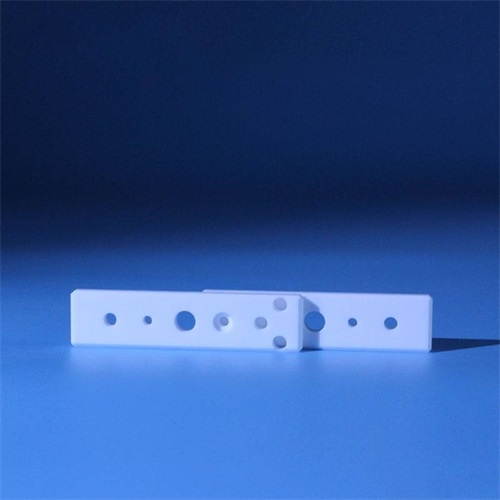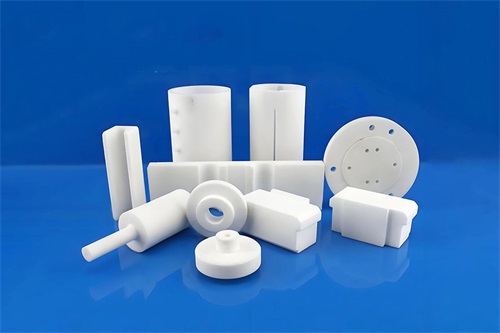The advantages and applications of Macor ceramics in the field of radiation protection in the nuclear industry
The core advantages of Macor ceramics
Macor ceramics (microcrystalline glass ceramics) are high-performance materials that have significant advantages in the field of radiation protection in the nuclear industry due to their unique physical and chemical properties
- Excellent radiation resistance performance
-Macor ceramics have zero porosity and low neutron activation properties, which can effectively reduce radiation damage. Even if exposed to high radiation environments for a long time, it can still maintain structural integrity and avoid embrittlement or deformation caused by irradiation. For example, in nuclear reactor control rod supports, their radiation resistance can extend the lifespan of components to more than three times that of traditional metal materials. - Stability under extreme temperatures
-Macor ceramics can withstand continuous high temperatures of 800 ℃ and peak temperatures of 1000 ℃, with a thermal expansion coefficient (9.3 × 10 ⁻⁶/K) similar to that of metals. This characteristic enables it to avoid the risk of fracture caused by thermal stress in the thermal cycle of nuclear reactors, ensuring the long-term stable operation of seals and insulation components. - Chemical inertness and corrosion resistance
-Macor ceramics have extremely strong resistance to corrosive media in strong acids, strong bases, and nuclear waste. The corrosion resistance of key components such as valves and pipelines in nuclear fuel reprocessing equipment can effectively reduce the risk of leakage caused by corrosion. - Low gas release rate and vacuum compatibility
-In ultra-high vacuum environments, the gas release rate of Macor ceramics is less than 1 × 10 ⁻⁹ Torr · L/s · cm ². This feature enables it to avoid releasing gas to contaminate the reactor cavity, especially suitable for vacuum insulation components in nuclear fusion devices. - Precision machining and fast delivery capability
-Macor ceramics support CNC precision machining with tolerance control up to ± 0.013mm. It can manufacture non-standard components such as radiation shielding covers and neutron absorber brackets with complex structures without the need for sintering processes, and the production cycle is 30% shorter than traditional ceramics.

2、 Typical application scenarios in the nuclear industry
Macor ceramics are widely used in the nuclear industry, covering multiple stages from reactor core components to nuclear waste disposal:
- Core components of the reactor
-Control rod guide bracket: The low neutron absorption characteristics and high temperature resistance of Macor ceramics ensure precise movement of control rods in high-temperature radiation environments, improving reactor regulation efficiency.
-Core monitoring instrument shell: shields external radiation interference, ensures the accuracy of sensor signal transmission, and is applied to fast neutron reactors and high-temperature gas cooled reactors. - Nuclear fuel cycle equipment
-Spent fuel processing container lining: corrosion resistance and radiation stability, preventing radioactive material leakage, extending equipment maintenance cycle to more than 5 years.
-Uranium enrichment centrifuge components: Lightweight design (density only 2.52g/cm ³) reduces rotational inertia, improves centrifuge efficiency, and resists corrosion from uranium hexafluoride. - Storage and transportation of nuclear waste
-High level radioactive waste shielding container: The multi-layer Macor ceramic composite structure can attenuate gamma rays and neutron radiation, with a protection efficiency 40% higher than lead based materials, and no risk of heavy metal pollution.
-Transport tank sealing ring: The radiation aging resistance ensures that the sealing performance does not degrade during long-distance transportation, and has passed extreme temperature tests from -50 ℃ to+300 ℃.

Macor ceramics have become an ideal material for radiation protection in the nuclear industry due to their excellent radiation resistance, high temperature stability, chemical inertness, low gas release rate, and precision machining capabilities. Whether in precise control of reactor core components or in safety barriers for nuclear waste disposal, Macor ceramics can provide highly reliable, wear-resistant, and adaptable solutions, providing critical support for the safety and technological innovation of nuclear energy.
CATEGORIES
LATEST NEWS
- Petrochemical ceramic injec...
- Zirconia Ceramic Rod Custom...
- High-temperature resistance...
- What is the wear resistance...
- What is the hardness of cer...
- Aluminum oxide ceramic cust...
- What are the main aspects o...
- What are the mechanical pro...
- Thermal properties of zirco...
- What properties should be c...
